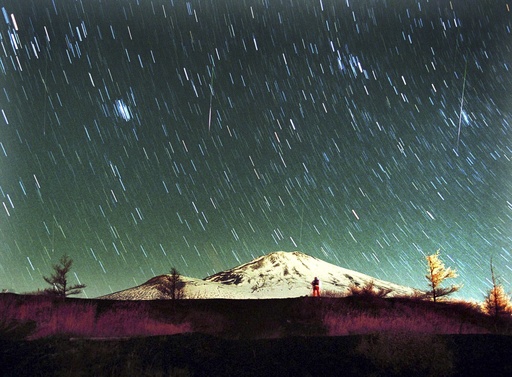
The Leonids are known for their swift meteors, which can zip through the atmosphere at speeds reaching 44 miles per second (70 kilometers per second). Shyam Balaji, an expert from King’s College London, noted that this year’s conditions may not be ideal for viewing the meteor shower due to the brightness of the nearly full moon. He advised that observing the shower during the early morning hours, when the moon is lower in the sky, could enhance the chances of spotting more meteors.
Under perfect conditions, viewers may expect to see about 15 meteors per hour. The peak viewing for this year’s shower will occur on Sunday when the moon is about 98% full, and the Leonid shower will continue through December 2.
Understanding meteor showers can enhance your experience. Generally, numerous meteor showers take place each year, and you do not need special gear to view them. Most of these showers originate from the debris left behind by comets; for the Leonids, the progenitor is comet Tempel-Tuttle.
As celestial rocks enter Earth’s atmosphere, they heat up from air resistance, which causes the surrounding air to glow, creating the fleeting appearance of a fiery tail — a phenomenon known as a “shooting star.” These trails may be observed against the night sky and can vary in size from tiny particles to larger boulders.
The best time to catch a glimpse of meteor showers is usually between midnight and dawn. Ideal viewing conditions include dark skies, far from the light pollution of urban areas. Additionally, meteor showers tend to appear most spectacularly on clear nights when the moon is at its least visible. To optimize meteor sighting, it’s also beneficial to avoid distractions like checking your phone, allowing your eyes to adjust better to the darkness.
If you’re interested in future meteor sightings, various societies track and update schedules for upcoming major meteor showers, detailing peak viewing periods and moonlight conditions. The next prominent event is the Geminid meteor shower, which will peak in mid-December, providing another opportunity for stargazers to catch a stunning celestial display.
